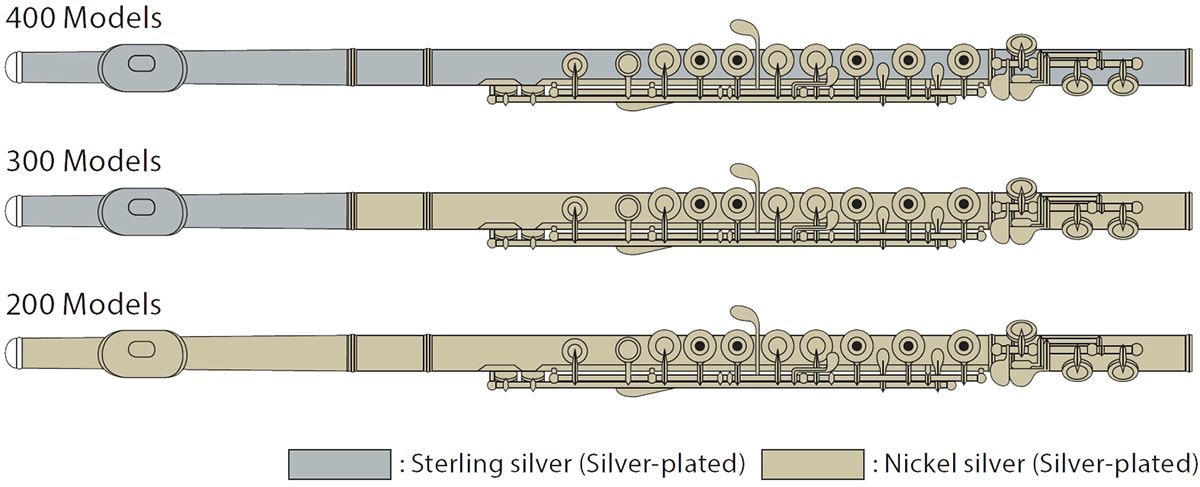400/300/200 Series
Intermediate & Student Flutes
- * Some models are available with a B footjoint. Please add H to the model number (ex. YFL-462H). B footjoint models with a case (FLC-48II) and a case bag (400 Models: FLB-400EHII, 300 Models: FLB-48II).
- * Some models are available with a gold-plated lip plate. Please add LPGP to the model number (ex. YFL-462H/LPGP).
Material Combination for Intermediate & Student Flutes

Toneholes

Drawn and Curled
Walls are drawn upward from the body material, giving the flute a broad, light sound.
Key Types
Covered (Plateau) keys are user-friendly, featuring a covered pad cup that seals the tonehole whenever the key is closed. This design is especially helpful for beginners who may not always press the center of the key.
In contrast, many advanced players prefer the open feel of Ring keys for greater tonal control. Intermediate and standard model French system flutes come with key plugs to seal the holes until players gain proficiency in covering them with their fingers.

Covered Keys

Ring (French) Keys
Key Systems
Many players find the Offset G configuration easier to play, which is why teachers often recommend it for beginners. This natural-feeling design is increasingly popular among advanced players as well. However, many advanced students and professionals still prefer the traditional In-line formation, where all the toneholes are arranged in a straight row.

In-Line

Offset G
Split E Mechanism

This key enhances the stability and intonation of the high E.
Footjoints
The B footjoint features an additional key that allows the player to reach notes a half step lower than those possible with the C foot. This design also influences the sound: the B footjoint produces a darker, more powerful tone with excellent projection, while the C footjoint offers a warmer, more flexible sound.

B Footjoint

C Footjoint




